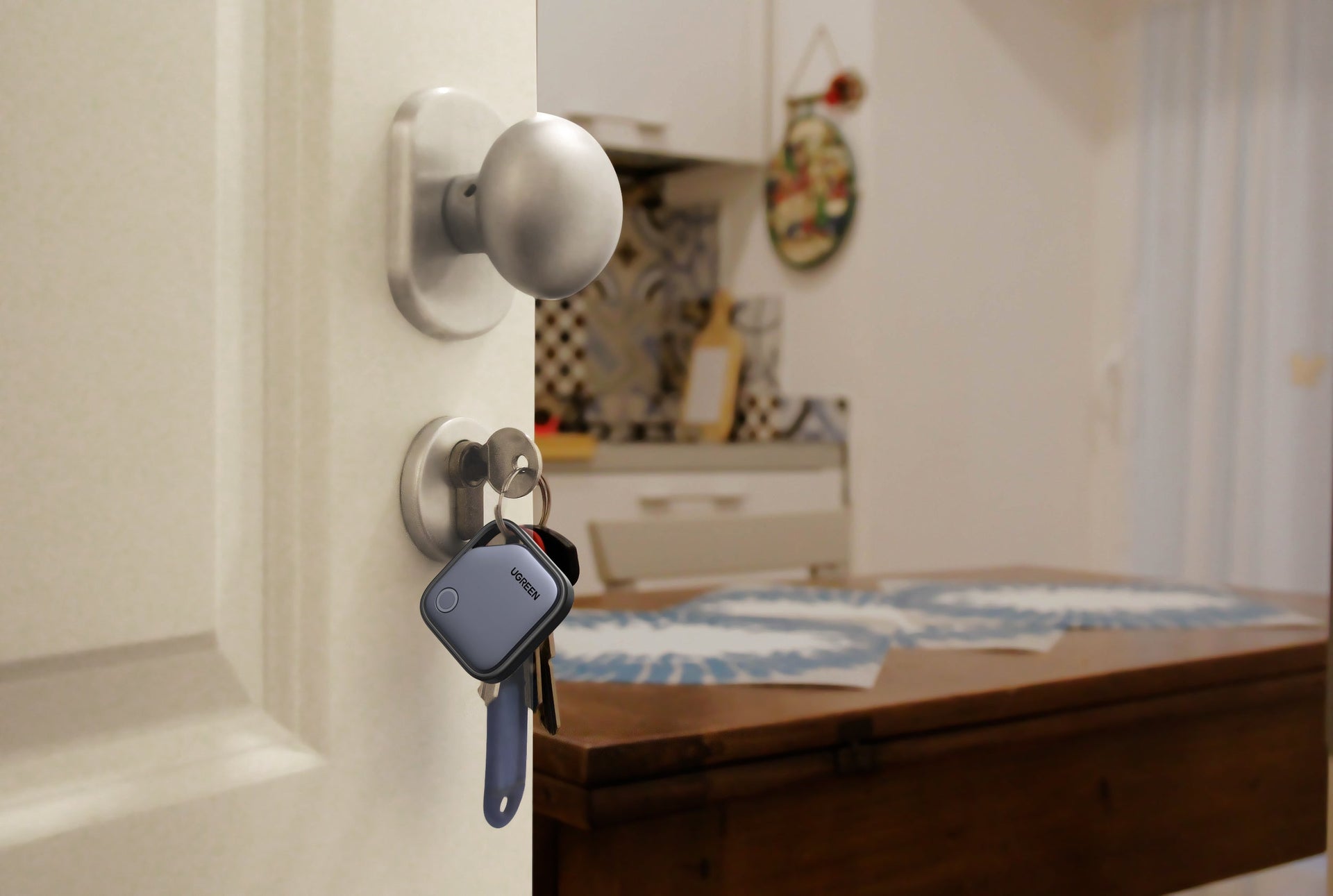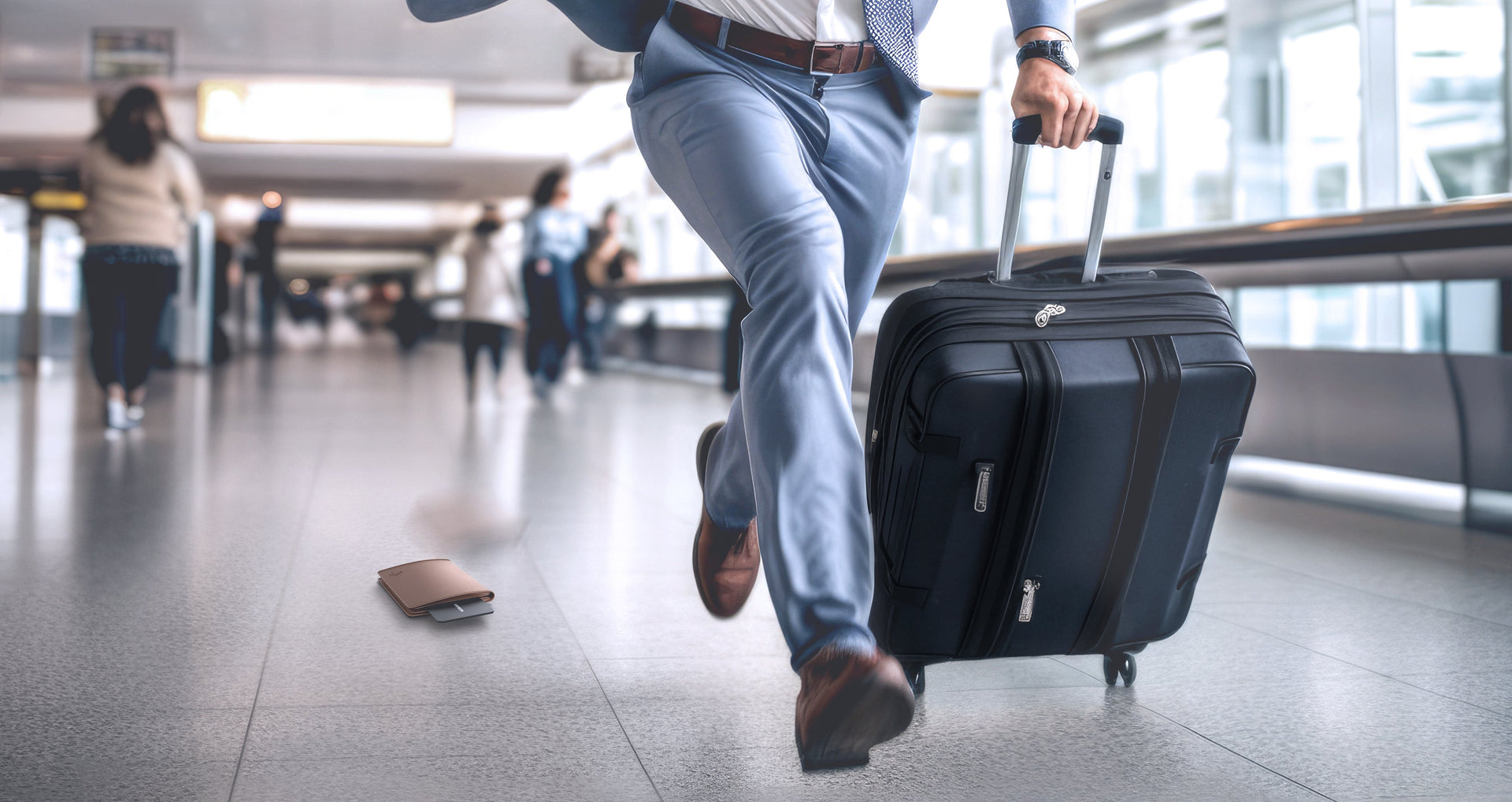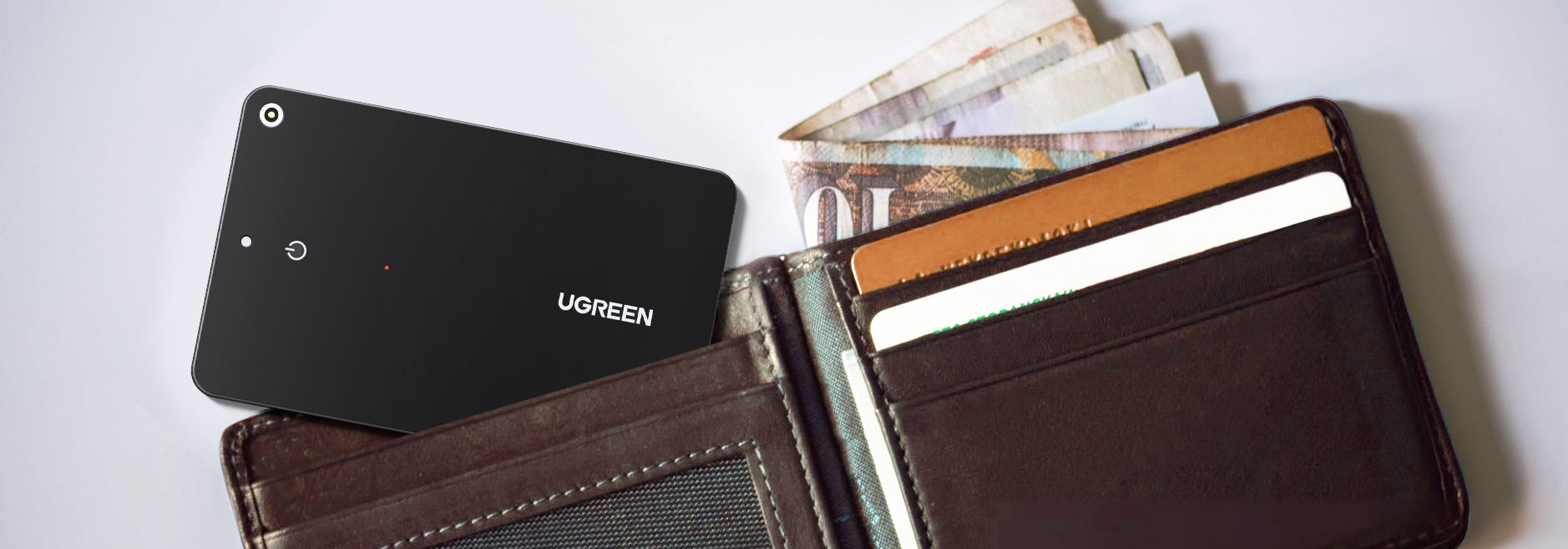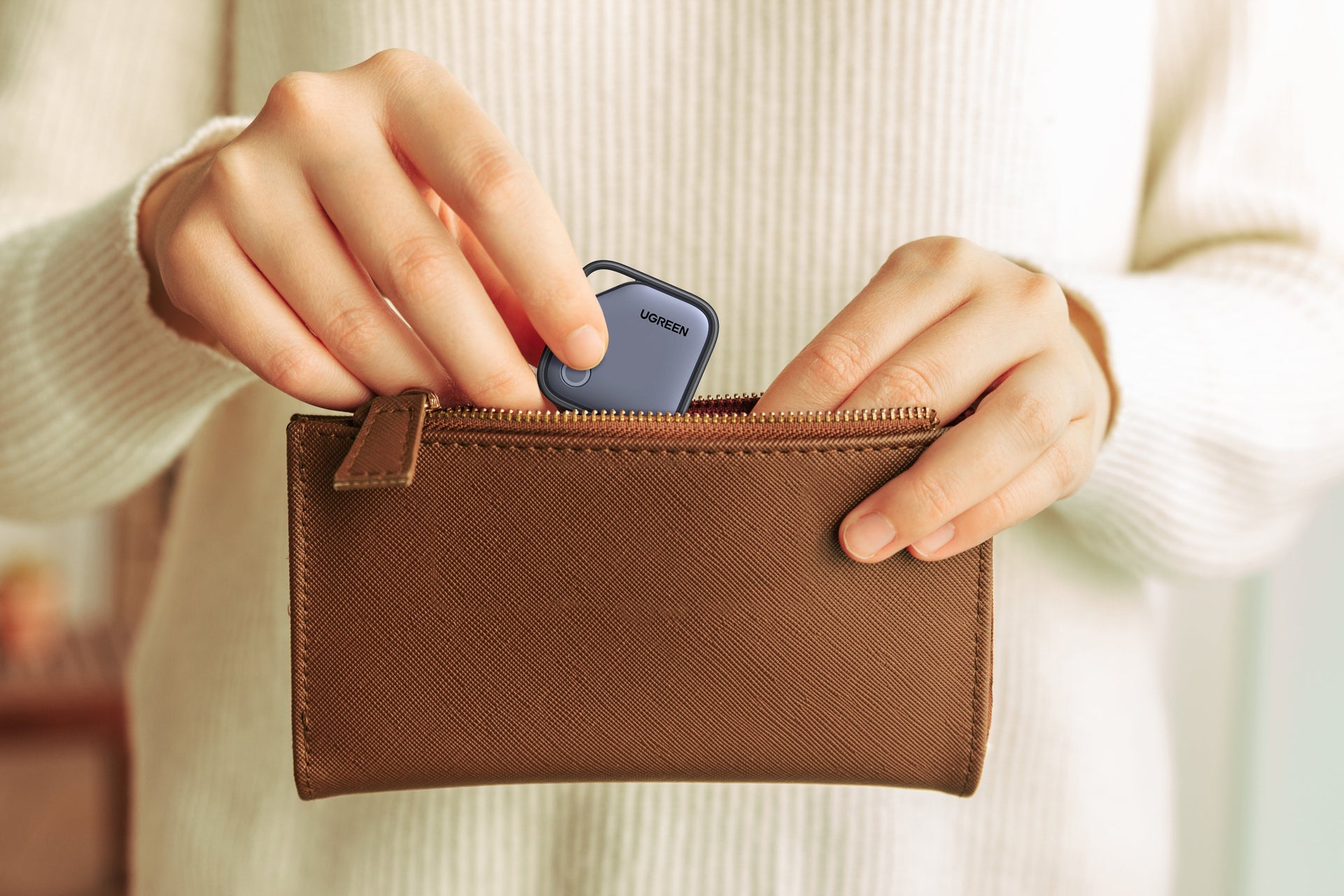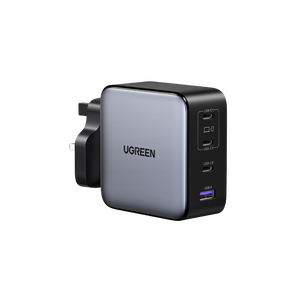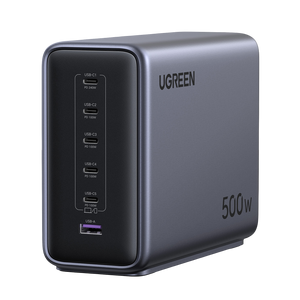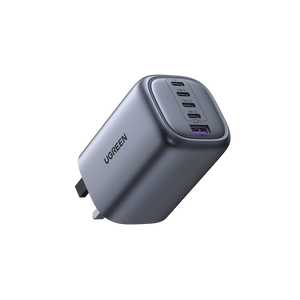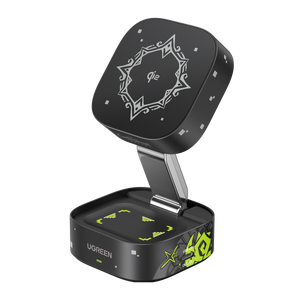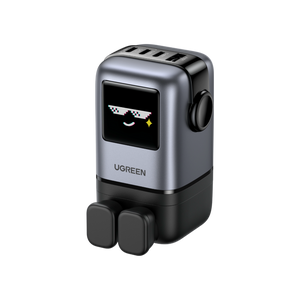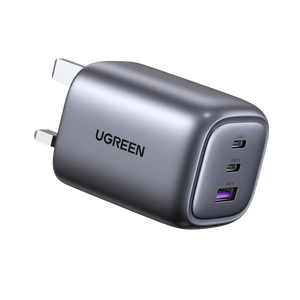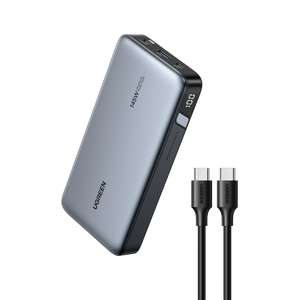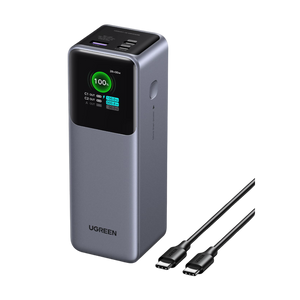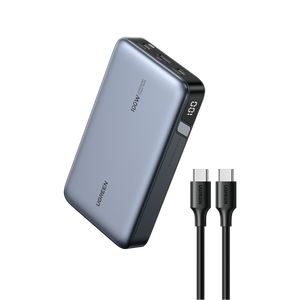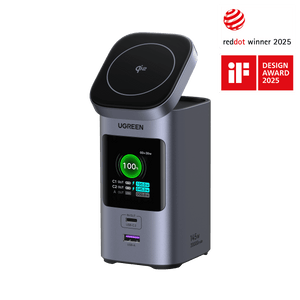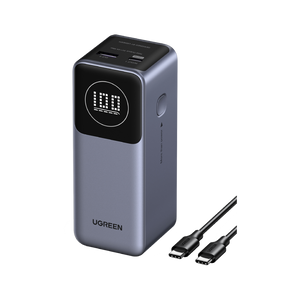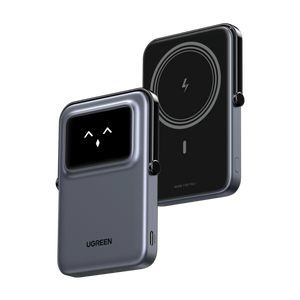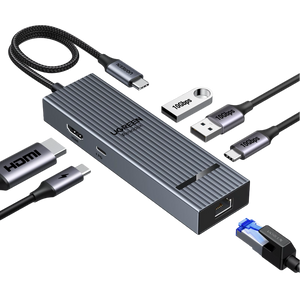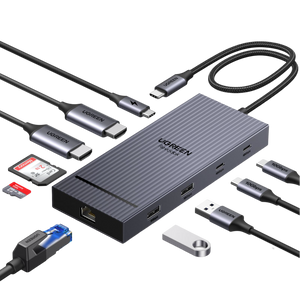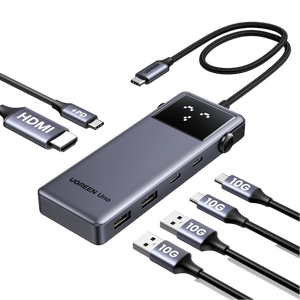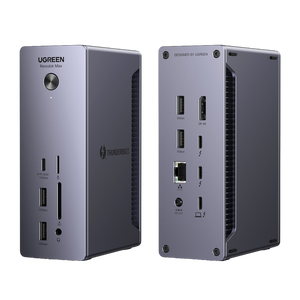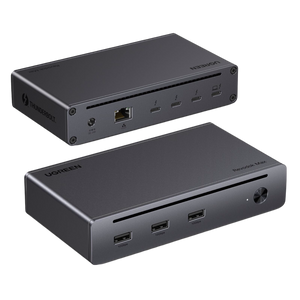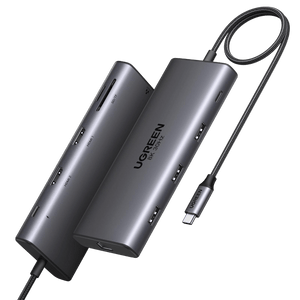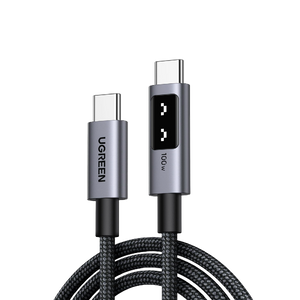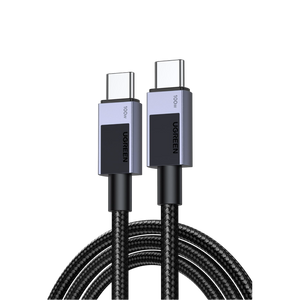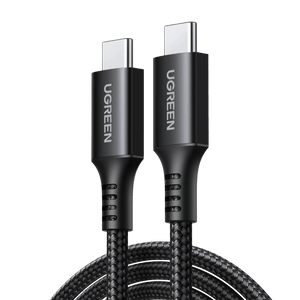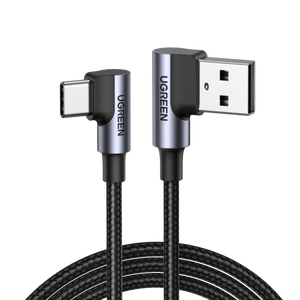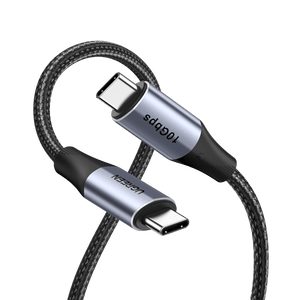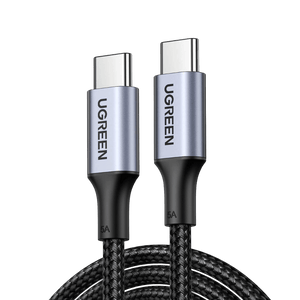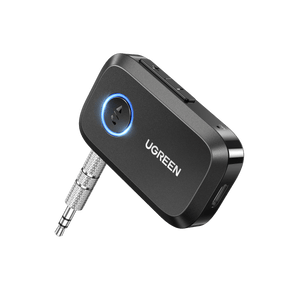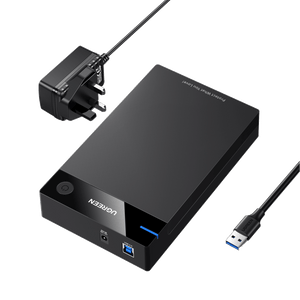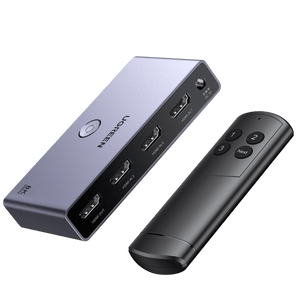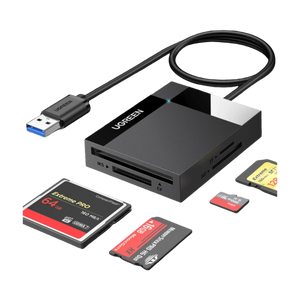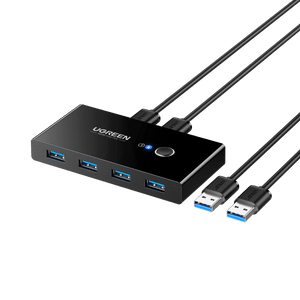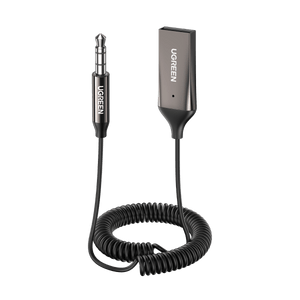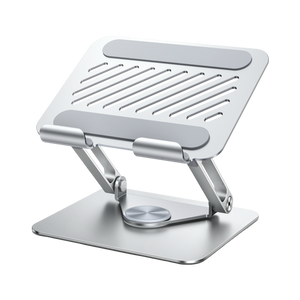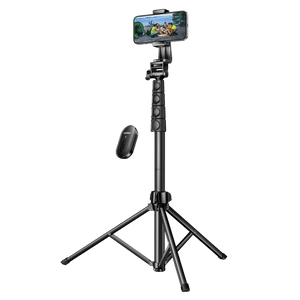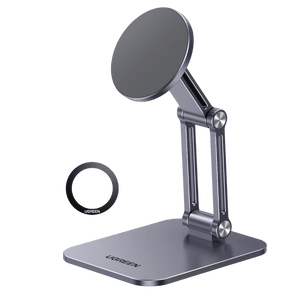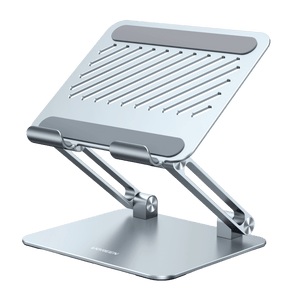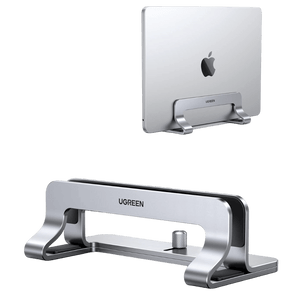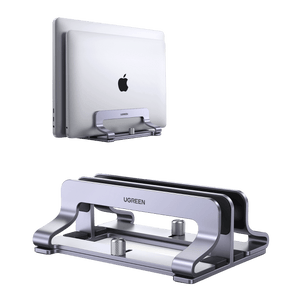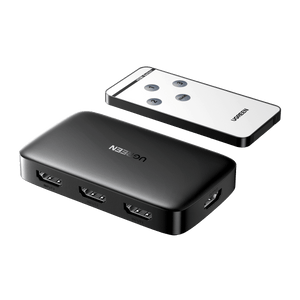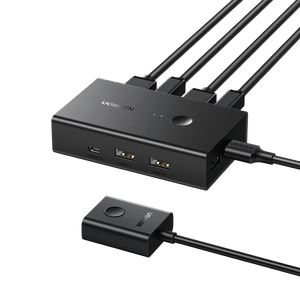Find My vs GPS vs Bluetooth: Comparing Tracking Technologies and How to Choose
Whether you are always losing your keys, need to keep an eye on your pet in real-time, or merely wish to enjoy the comfort that comes from traveling with your valuables, location trackers are more relevant than ever. However, choosing the correct one can be challenging.
From GPS and Bluetooth tracking to Apple's Find My system, these technologies all aim to solve the same problem: helping you locate what matters to you. While they all promise the same result, they differ significantly in how they go about doing it, especially when it comes to range, accuracy, battery life, real-time functionality, indoor/outdoor reliability, and data integrity.
No wonder so many people have questions like:
- “Is GPS really necessary just to find my keys?”
- “Can Find My still work without internet or nearby Wi-Fi?”
- “Are Bluetooth trackers useful if I’m far from my phone?”
If you’ve wondered the same, you’re in the right place.
Here, we evaluate all three tracking technologies, Bluetooth, GPS, and Find My, across seven important performance categories and 29 comparison points. You'll learn how each performs, where they shine, and where they fall short so that you can match the right technology to the right task.

Key Takeaways
Short on time? No problem! This table provides a quick, broad picture of the actual differences between Find My, Bluetooth, and GPS trackers. From tracking accuracy and indoor range to battery life, privacy, and prices, we've broken it down into bite-sized bits to allow you to match the proper tech with your lifestyle.
Whether you're a forgetful commuter, frequent traveler, or monitoring a pet or family member, this summary gives you the basics, so you can finally stop guessing and start making smart choices.
Tracking Technologies Compared at a Glance
|
Category |
Comparison Factor |
Find My (Apple) |
Bluetooth Trackers |
GPS Trackers |
|
Tracking Capability |
Tracking Technology |
Utilises Bluetooth signals from Apple devices, crowdsourced via the Find My network |
Low-energy Bluetooth broadcasts, relies on nearby phones |
Direct satellite connection via built-in GPS module |
|
Real-Time Tracking |
Near real-time (depending on nearby Apple devices) |
Noticeable delay; requires connection to a mobile device |
True real-time tracking; update intervals adjustable |
|
|
Coverage Range |
Global coverage (as long as Apple devices are present) |
Typically, 10–50 metres |
Global coverage, depending on mobile data or signal |
|
|
Location Accuracy |
Accurate within a few metres; UWB offers up to 30 cm precision |
Generally, within 5–10 metres |
High accuracy outdoors (typically 1–5 metres) |
|
|
Wall Penetration / Indoor Nav. |
Yes; UWB supports precise indoor navigation |
Limited – signal weakens significantly through walls |
Poor indoor accuracy – GPS signals struggle indoors |
|
|
Offline Tracking |
Supported via the Apple device network |
Not supported |
Generally unsupported – requires SIM card with data |
|
|
Signal Dependency |
Needs nearby Apple devices with connectivity |
Depends on user’s phone and app permissions |
Relies on GPS satellite and mobile data |
|
|
Power & Hardware |
Power Consumption / Efficiency |
Extremely low – approx. 1-2 years battery life |
Very low – around 1 year (varies by model) |
High power consumption – 1 to 7 days |
|
Battery Drain |
Minimal |
Minimal |
High |
|
|
Device Size |
Compact (e.g. AirTag: 31.9mm) |
Smaller/lighter (e.g. Tile Mate) |
Larger size due to battery and SIM |
|
|
Battery Life |
Around 1-2 years |
Typically, 6–12 months |
1–7 days depending on usage |
|
|
Replaceable Battery |
Yes (e.g. AirTag CR2032) |
Varies – some support it |
Generally rechargeable; often not replaceable |
|
|
Ease of Use |
App Requirement |
No – native to iOS |
Yes – needs third-party app (e.g. Tile, Chipolo) |
Yes – needs dedicated app |
|
Device Compatibility |
iOS only |
Android & iOS |
Android & iOS |
|
|
Setup / Pairing |
Seamless, auto pairing |
Manual pairing |
Requires SIM, account setup |
|
|
Map Interface & Visuals |
Integrated with Apple Maps |
Varies – depends on app |
Often uses Google Maps |
|
|
Suitability |
Target Users |
Apple users valuing privacy and integration |
Budget-conscious or Android users |
Users needing live, mobile tracking |
|
Best Use Scenarios |
Keys, wallets, luggage |
Home, office, remotes |
Vehicles, kids, elderly, pets |
|
|
Cost & Value |
Device Price |
£25–£40 |
£20–£35 |
£50–£200 |
|
SIM / Data Costs |
None |
None |
Yes – needs data SIM |
|
|
Privacy & Security |
Encrypted Communication |
Yes – end-to-end encrypted |
Yes – varies by brand |
Yes – varies by brand |
|
Anti-Stalking Detection |
Yes – alerts on unfamiliar devices |
Mostly absent |
Typically, not included |
|
|
Data Storage Location |
Apple’s encrypted servers |
Brand-based servers |
Brand servers – varies |
|
|
User Privacy Features |
Strong emphasis on privacy-first policies |
Inconsistent across brands |
Varies widely |
|
|
System Integration |
Supported Brands |
Apple, UGREEN, some Chipolo |
Tile, Chipolo, Nut |
Jiobit, Tracki, Tractive |
|
Cross-Platform Support |
No |
Yes |
Yes |
|
|
System-Level Integration |
Deep – includes Siri, Maps, notifications |
Moderate – relies on app |
Moderate – app-dependent |
|
|
Family Sharing Support |
Yes, via iCloud |
Some third-party apps |
Typically, via shared login |
|
|
Flagship Products |
AirTag, UGREEN FineTrack |
Tile Mate, Chipolo One |
Jiobit, Tracki, Invoxia |
This table is merely the tip of the iceberg. Each tracker performs differently in real-world situations and what's good on paper may be disappointing when you need it. Next, we expose how these systems really work. We contrast their underlying technology, update speeds, indoor versus outdoor functionality, and why one system may fail while another succeeds.
A. Monitoring Performance
1. How They Work: Under the Hood
- Find My: Apple's Find My network is an integrated crowdsource location system on nearly all Apple devices. All iPhone, iPad, and Mac devices act as passive sensors, searching anonymously for nearby Find My-capable devices (like AirTags) and relaying their encrypted location data to iCloud. This means that you don't need to be near your lost item; any other individual's Apple device can find it. For even more precision, Ultra-Wideband (UWB) chip-equipped devices, like iPhone 11 and subsequent models, can use spatial awareness to guide you to the exact spot, typically with centimetre accuracy. It's like having a radar for your keys.

- GPS Trackers: GPS utilizes Earth-orbiting satellites to locate you precisely. The tracker communicates with at least four satellites in order to calculate its location and then sends that data to your phone using mobile data or Wi-Fi. GPS trackers are highly effective for outdoor use, like tracking cars, luggage, or pets. However, they require connectivity in order to display the data on your phone.
- Bluetooth Trackers: Bluetooth finders connect directly to your phone directly using short-range wireless signals. They work by sensing signal strength (RSSI) to measure how close your misplaced item is, making it easy to find your keys in the living room or under the bed. The connection is direct, so additional devices and satellites aren't needed. However, the downside is the range is typically between 10 to 50 meters.
2. Real-Time Location Updates
- GPS: If you need instant feedback while tracking a moving object, like a dog in a public park or a courier van, GPS is the ideal solution. As long as the device has a clear line of sight to the sky and mobile reception, updates can come every few seconds. This feature makes GPS best suited for tracking across cities, motorways, and countryside.
- Find My: Find My is not always active, but it's constantly dynamic. Updates depend on the proximity of Apple devices to your tracker. In cities like London or Manchester, this is almost real-time due to the high concentration of Apple users. In rural or remote areas, updates may be delayed or come to a dead stop until another device comes within range.
- Bluetooth:If your phone can pick up the Bluetooth signal, it indicates the last known location of your item. While this isn't live tracking, it can alert you to where your object was last seen. This feature is useful if your item is being moved away from you (For example, if it was left in a taxi).
3. Coverage Range
- GPS: Unbeatable global reach. As long as the tracker can see the sky and has cellular connectivity, it can provide location data from almost anywhere, whether on the interstates, in national parks, or even abroad. This feature is ideal for travelers and business users who need access beyond a local network.
- Find My: Best suited for environments with a high density of Apple users. Urban areas are ideal as residents benefit from constant crowdsourced updates. However, if you venture into a low-traffic area, forest trails, or deep underground garages, you might struggle to find your item unless another Apple user happens to walk by.
- Bluetooth: Bluetooth has a Limited range of approximately 10 to 50 metres. Obstacles, such as walls, metal, or other objects, can further reduce this range. It is suitable for household use, like finding your wallet, but not effective for tracking your luggage post-check-in.
4. Accuracy
- Find My + UWB: Apple's Ultra-Wideband (UWB) chip gives you precision location tracking, with an accuracy of up to 10 centimetres. It's so precise it will even guide you visually to your item with on-screen arrows and haptics feedback. However, you'll need a UWB-enabled iPhone (11 or later), and your AirTag needs to be nearby.
- GPS: GPS is very accurate, usually between 3 to 10 metres. It’s especially helpful for locating your vehicle in a huge lot or a person in an open field. However, the signal strength and accuracy can decrease indoor and inclement weather.
- Bluetooth: Bluetooth provides approximate locations. It can tell you that you're "very close" or "a room away," but it won't guide you to the specific shelf or drawer. While it’s useful for general proximity, it lacks precision.
5. Indoors Use & Wall Penetration
- Find My + UWB: UWB(Ultra-Wideband) technology is excellent for indoor use. UWB radio waves penetrate walls and furniture more than standard Bluetooth or GPS signals. In the real world, this means you can locate your AirTag tucked behind a couch pillow or in a gym locker with much greater ease.
- GPS: GPS works poorly indoors as satellite signals struggle to penetrate roofs or concrete. Inside buildings, underground, or in lifts, GPS location tracking often fails completely.
- Bluetooth: Bluetooth can be used indoors, but its effectiveness is limited. Walls or even a closed door can disrupt the signal. It operates best in open floor plans where there is a direct line of sight, such as across a living room.
6. Offline Tracking Capability
- Find My: One of Find My's best features is its offline tracking capability. When your device goes missing and is outside of Wi-Fi or cellular coverage, any nearby Apple device can pick up its signal. After detecting the signal, it reports back to your iCloud in the background without anyone noticing. The process is passive, secure, and entirely anonymous.
- GPS: The tracker can determine its location offline via satellite but cannot report that back to you except when it is in an area with mobile connectivity. So, while the location is "known," it can't be accessed until connectivity is restored.
- Bluetooth: Bluetooth works only if you're nearby. If you walk past your lost keys, they'll reconnect, but you won’t have remote tracking or access unless you're physically in range.
7. Resistance to Interference
- GPS: GPS can be affected by "urban canyons" (skyscrapers), stormy weather, and indoor areas. When satellites have difficulty locating the tracker, the signal quality can suffer. GPS performs best in outdoor and open areas.
- Find My: The performance is dependent on Apple device population density. In populated cities and public areas, it's surprisingly strong. In remote areas or huge warehouses where Apple usage is low, you may experience a lag or no updates at all.
- Bluetooth: Bluetooth is the most prone to disruption. Competing signals (Wi-Fi, microwaves, other Bluetooth devices) and physical barriers can weaken or break the connection. It operates best when interference is minimal.
B. Device & Power Considerations
1. Power Consumption and Battery Life
- GPS: GPS is power-hungry. A GPS tracker with real-time updates can burn through its battery in a day or two. Depending on usage, you may need to recharge it frequently.
- Find My & Bluetooth: Find My and Bluetooth are more energy-efficient. Most devices use coin-cell batteries (like CR2032s) that will last up to a year or more. Instead of recharging, you will simply need to swap out the battery when it depletes.
2. Internet or Network Dependence
- GPS: GPS trackers requires a SIM card and an active cellular data plan. Without these, the tracker is still capable of getting location data but can't transmit it to your phone.
- Find My: Find My Network does not need internet connectivity on the device. It uses nearby Apple devices for connectivity. As long as there is a nearby iPhone with internet enabled, the location will update.
- Bluetooth: Only your phone's Bluetooth is needed. There is no need for internet access, a SIM, or a subscription.
3. Energy Efficiency
- Find My & Bluetooth: These trackers are designed for longevity. They operate on Bluetooth Low Energy (BLE), so they consume power slowly and work best for year-long deployments.
- GPS: GPS is the least energy-efficient option. Ongoing satellite communication and data transfer can quickly drain the battery, making it ideal for short-term usage or when constant charging is available.
4. Device Size
- Bluetooth: Bluetooth is the thinnest option available. Many Bluetooth trackers are credit card-thin, making them easy to conceal in a wallet, clip onto a keychain, or stick into a purse.
- Find My: These trackers are slightly thicker than ultra-slim Bluetooth trackers but still thin enough for everyday objects like keys, backpacks, or coat pockets.

- GPS: GPS devices are generally larger and heavier. They contain antennas, batteries, and integrated SIM cards, making them a better fit for luggage, pet collars, or tracking cars.
C. User Experience
1. App Setup & Installation
With Find My, the setup is seamless; no app is required. Just bring the tracker near your iPhone and you’re guided through the instant pairing process. Bluetooth and GPS trackers, on the other hand, typically require downloading a companion app, scanning QR codes, or logging into an account.
2. Platform Compatibility
Find My is exclusive to iOS users, while Bluetooth and GPS options work across iOS and Android, making them more flexible for mixed-device households.
3. Pairing & Activation
Apple’s pairing process is almost seamless. For Bluetooth trackers, setup is manual but straightforward. GPS devices require more steps; you often need to activate a SIM card, choose a data plan, and configure settings inside the app before it’s fully operational.
4. Maps & Feedback
Find My utilizes Apple Maps and even gives directional cues on some iPhones using UWB(Ultra-Wideband). Bluetooth trackers are generally less sophisticated, typically using signal or sound pings. GPS trackers typically have Google Maps built-in, but the quality of the interface depends on how well the brand's app appears.
In terms of seamless setup and polished visuals, Find My is the gold standard, especially for users in the Apple ecosystem. Bluetooth trackers are decent, while GPS trackers have a learning curve but offer more control for serious tracking needs.
D. Use Cases & Ideal Users
1. Best For Who
Find My: Everyday iPhone users who frequently misplace items like keys, wallets, or bags.
Bluetooth: Frugal consumers and those who mostly lose things at home or the office.
GPS: Caregivers at home, road travelers, and pet owners who need long-range or live location tracking.
2. Where They Shine
Find My is most helpful for everyday commutes and urban areas where Apple devices are widely used.
Bluetooth trackers perform best indoors, at home, in the coffee shop, or the office.
GPS trackers are your outdoor best friend, whether it’s hiking adventure, car tracking, or ensuring kid safety.
Ultimately, the effectiveness of a tracker depends not just on the device itself but also on where you plan to use it and how.
E. Cost & Care
1. Upfront Cost
- Bluetooth trackers are the cheapest at £10.
- Find My trackers like AirTag or UGREEN FineTrack are £20–£35.
- GPS trackers are the most expensive, with some costing over £100 depending on the features.
2. Repeated Costs
GPS trackers require a SIM card and occasional data allowance, at around £3–£10/month. Find My and Bluetooth trackers do not need this, and are less expensive in the long run.
3. Battery Life
- GPS: Needs frequent charging, depending on usage.
- Find My/Bluetooth: 6–24 months from a single coin cell.
4. Battery Replacement
The majority of Find My and Bluetooth trackers use user-replaceable batteries. GPS trackers will use non-removable rechargeable batteries, which means you will need to retire the device when the battery runs down.
F. Privacy & Security
1. Encryption & Data Safety
Find My leads the way with end-to-end encrypted location sharing and anonymised data relays. Bluetooth and GPS trackers may be quite dissimilar; some models siphon off more data than you would expect, and protection isn't always adequately detailed.
2. Anti-Stalking Alerts
Apple's feature notifies you if an unfamiliar AirTag has followed you is crucial in preventing abuse. Alas, most Bluetooth and GPS trackers still lack this feature.
3. Where Is Your Data Stored
- Find My: Securely stored on Apple servers.
- Others: Often cloud-hosted, brand-dependent, and sometimes vulnerable to breaches or unclear terms.
4. Brand Trustworthiness
- Apple enforces strict privacy protocols. Other manufacturers vary; some have transparent policies, while others are murky or data-hungry.
- If privacy is a priority, stick with Find My or carefully vet the brand behind your Bluetooth or GPS tracker.
G. Ecosystem Integration
1. Supported Brands & Hardware
- Find My: Fully supported by Apple hardware and an increasing number of third-party trackers like UGREEN FineTrack and Chipolo One Spot.
- Bluetooth trackers: Typically offered by Tile, Nut, Chipolo, etc., with hardware to facilitate normal Android/iOS use.
- GPS trackers: Brands like Tractive, Jiobit, and Petfon provide devices for pet, car, and family safety.
2. Cross-Platform Support
- Bluetooth and GPS trackers are more cross-platform compatible, with both Android and iOS supporting them with partner apps.
- Find My is exclusive to Apple devices and does not support Android, which makes it unsuitable for multi-device families.
3. System Features & Integration
- Find My is integrated as a system feature in iOS rather than being a standalone app. It offers advantages such as Siri voice help, Family Sharing, smart notifications, Apple Maps overlays, and even Precision Finding (if you've got UWB devices).
- Bluetooth and GPS trackers typically rely on their apps, which may vary in quality. Most of these apps are not integrated deeply into the operating system, meaning you'll have to launch the app separately to check or manage your devices.
4. Multi-User Support & Sharing
- The iCloud Family Sharing feature in Find My enables lots of users in a single Apple ecosystem to locate collectively shared items like luggage or keys.

- Most Bluetooth and GPS tracking programs don't have multi-user capabilities out of the box. Others provide shared accounts or access tokens, but they are usually a pain to set up.
If your whole family has iPhones, the Find My network operates seamlessly. For Android users or families with a mix of devices, consider Bluetooth or GPS trackers, but be mindful of brand selection to ensure compatibility and ease of use.
Conclusion
Selecting the best tracker isn't about specification; it's about choosing one that best fits your lifestyle. Do you always lose house keys? Take expensive gear on adventures? Are you looking to monitor the location history of several family members? The best tracking technology changes with your environment, how far off your possessions may wander, and how much privacy and maintenance you value.
iPhone owners: If you're already part of Apple's ecosystem, the Find My network is unparalleled in ease of use and seamless integration. Smart finders like UGREEN FineTrack or AirTag are effortlessly integrated with your iPhone's native apps without the hassle of downloading an app or shelling out extra accessories. For everyday tracking, this is the most unobtrusive solution available.
Outdoor & Long-Range Tracking: If you need to track items on the move over distances, investing in a GPS tracker is worthwhile. Although they tend to be heavier and pricier, they offer worldwide coverage, real-time updates, and peace of mind in unpredictable situations.
Budget-Friendly & Android Users: For people who simply want to track lost items in the house, there are many affordable and effective Bluetooth trackers. Devices such as Tile or Nut are platform-compatible, simple to use, and appropriate for proximity tracking. Just don't expect real-time updates if you’re far away.
Each system has its application, and there is a one-size-fits-all solution. However, with the appropriate compatibility, you can turn hours of "Where is it?" into seconds of "Found it."
